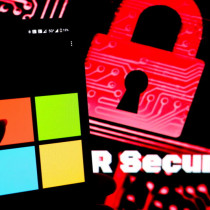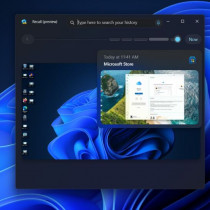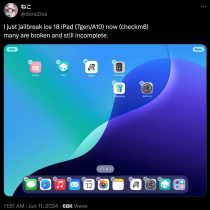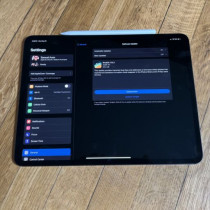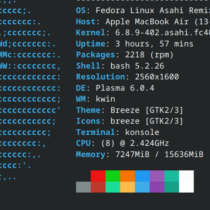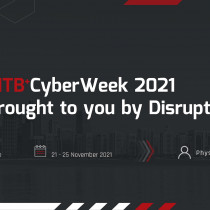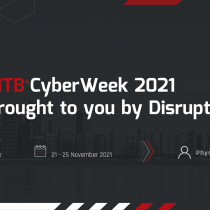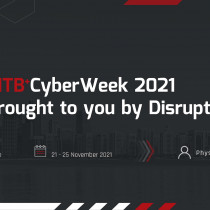Hard Attack: Chaintech Video
By: biatch0
Do not be
fooled by the big GeForce4 in front of the MX440. Unlike previous nVidia MX
series where the MX is a clocked down, memory bandwidth deprived beast, the
GeForce4 MX is far from being a true GeForce4. The GeForce4 MX series is based
upon the old architecture of NV17, actually it is an NV17, only it went through
some shrinking procedures. Unlike the original NV17, the current batch used to
power the GeForce4 MX series is made with a 0.15um architecture, which allows
it to operate at higher frequencies and lower power consumption. Some of you
may already know, NV17 was the code name for the GeForce2 series. So, you could
probably call the GeForce4MX a GeForce2 on steroids and get away with it.
The
Ti4600 isn’t exactly what I would call a GeForce4 either. Considering the fact
that the GeForce4 Ti series has no additional rendering features in comparison
to the GeForce3’s, I would have named the GeForce4 Ti something like, GeForce3
Ti1000. The GeForce4 is still stuck with everything that the GeForce3 has, and
the nice DirectX 8.1 support at the side isn’t really DirectX 8.1 support, more
like DirectX 8.1 compatibility. The rights Pixel Shader 1.4 of DirectX 8.1 is
owned entirely by ATi, and so, the GeForce3 and 4 end up going back to PS1.3 (I
shall refer to Pixel Shader as PS, it’s quite a long word) in order to deceive
the consumers into believing that they have DirectX 8.1 support. Actually, I’m
sure they’ll deceive just about everyone, since it’s almost impossible to tell
the difference between an identical scene rendered with PS1.3 and PS1.4.
The most
striking thing about the Chaintech cards is obviously their bright gold
coloured heatsinks, not to mention the gold external plates. In both the MX440
and Ti4600 boxes, you’ll find a user manual, driver CD which includes WinDVD,
an S-Video cable and two games, Aquanox and MDK2. You get a little extra stuff
if you get the Ti4600, a DVI to analog converter, and an S-Video In cable.
NVIDIA GeForce4 Ti 4600
Graphics Engine
NVIDIA® GeForce4 Ti GPU @ 300MHz
Video Memory
128MB DDR Video Memory @ 650MHz DDR
Bus standard
AGP 4X / 2X / 1X
Connector
Dual VGA or DVI (with converter)
TV-out Connector (optional)
One S-VHS mini-DIN
NVIDIA Personal Cinema Ready (optional)
nView
Display
technology provides the ultimate multiple display flexibility and control
Accuview AA
Delivers high resolution, high frame rate, full scene antialiasing
Lightspeed Memory Architecture TM (LMA) II
128- bit DDR interface, radically improves memory efficiency
"Quad Cache" - Pixel, Texture, Primitive and Vertex - On chip cache
Lossless 4:1 Compression of Z-Data
Second Generation Occlusion Culling
nfiniteFX II Engine
Drives complex
geometry and animation w/ Dual Vertex Shaders and Faster Pixel Shaders
4.8Gsamples/sec
NVIDIA GeForce4 MX 440
Graphics Engine
NVIDIA® GeForce4 MX GPU @ 270MHz
Video Memory
64MB DDR Video Memory @ 400MHz DDR
Bus standard
AGP 4X / 2X / 1X
Connector
One VGA and one DVI
TV-out Connector (optional)
One S-VHS mini-DIN
NVIDIA Personal Cinema Ready (optional)
nView
Display
technology provides the ultimate multiple display flexibility and control
Accuview AA
Delivers high resolution, high frame rate, full scene antialiasing
Lightspeed Memory Architecture TM (LMA) II
128- bit DDR interface, radically improves memory efficiency
"Quad Cache" - Pixel, Texture, Primitive and Vertex - On chip cache
Lossless 4:1 Compression of Z-Data
Second Generation Occlusion Culling
Integrated TV encoder at 1024x768 resolution
Integrated full hardware MPEG- 2 decoder
Processes full
frame rate, full screen MPEG- 2 video
Motion compensation and IDCT
Allows for DVD
decoding with minimum CPU usage
HDTV ready
Testing
Our test
system:
AMD AthlonXP 1900+
256MB
PC2400 CL2.0 Kingmax DDR
Abit
KR7A-133R
GeForce4
MX440
3dMark2001
Quake III: Arena
GeForce4 Ti4600
3dMark2001
Quake III: Arena
Thoughts
and Conclusion
GeForce4
MX440
The
Chaintech GeForce4 MX440 in my opinion is quite something. It isn’t endowed
with BGA RAM modules like the SUMA GeForce4 MX440, but it still clocks very
well even compared to better known brands like Leadtek and Gainward. A 90MHz
overclock to the RAM and 45MHz overclock to the core is nothing to laugh at.
The highest MX440 clocks with stock cooling I have seen to date have been
330MHz core and 500MHz memory. The funky gold cooling solution, which I
initially thought was insufficient, proved more than enough to cool the MX440
core and at 490MHz, the RAM seemed to run cool enough to make buying RAMsinks a
waste of money. Unfortunately, it’s lack of rendering pipelines (MX series has
2, Ti series has 4) creates a huge bottleneck, which in turn limits the results
of overclocking once it reaches it’s bandwidth limit. Overall, I would
recommend the Chaintech GeForce4 MX440 to anyone who wants a gaming computer
but is on a tight budget.
+ very
overclockable
+ looks
good in a glass case near your trophies
- doesn’t
come with BGA RAM
- 2 rendering
pipelines
GeForce4
Ti4600
Unlike
the MX440, I was right when I said that the cooling solution provided along
with the Ti4600 was way short of being enough. At stock clock speeds of 300MHz
core and 650MHz memory, the heatsink on the core felt like it was about to melt
and flow onto the motherboard at any time. The RAMsinks weren’t so bad, but
were still lacking in the heat dissipation department. Considering the fact
that the Chaintech Ti4600 pretty much follows the nVidia reference design, I
would rather have seen the heatsinks on the reference design instead of the
bizarre gold heatsinks that they decided to use in the end. Assuming the design
they used was meant to impress overclockers, I think it isn’t going to work. If
the heatsink design they used had a copper base and aluminium fins along with a
Delta 7000RPM, now that would probably bring in the crowd.
Because
of the ‘slight’ heat problem, my adventures into overclocking were severely
limited, since I didn’t want to damage the card. I only managed to get the card
to work at 310MHz on the core and 700MHz on the memory before I started
imagining seeing smoke appear from the card. The limited overclockability of
the card wasn’t the only byproduct of the heat. The heat also caused a minor
slowdown during benching, doing a benchmark while the card was still cool
yielded better results than after it’s nuclear reactor was running full swing,
which explains the interestingly lower results in Q3A when overclocked.
It’s hard
to say that I’d recommend this card to anyone since the heat seems to be a
major problem in this card. But still, a person running his system in an
air-conditioned environment might find this card majorly attractive, either
because it performs better in the cold weather, or perhaps he wants a video
card that can double as a heater.
+ latest
and greatest
+ looks
good in a glass case near your trophies
- runs
way too hot
- costs
your arm, your leg, and your kidney
1.) FTP Dumpsites: A primer - Reaper
2.) Hacking the human mind: A look at the power of social engineering - L33tdawg
3.) The occasional hacking of web applications - spoonfork
4.) Setting up a Linux Transparent Firewall - Mutilator
5.) Passport Hijacking - Obscure
6.) Hard Attack: Chaintech Video - biatch0





